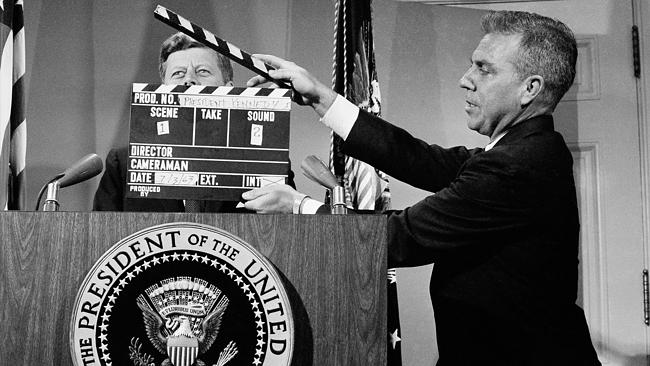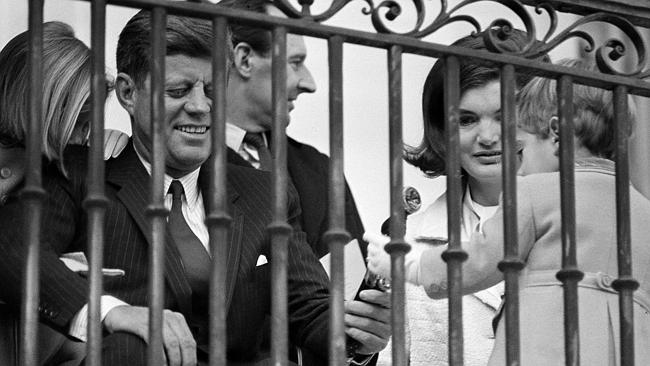President John F Kennedy planned to visit Australia prior to his death in 1963
PRESIDENT John F Kennedy planned to visit Australia weeks before deciding to travel to Dallas, Texas where he was assassinated 50 years ago.

US President John Fitzgerald Kennedy agreed to visit Australia and New Zealand weeks before deciding to travel to Dallas, Texas where he was assassinated 50 years ago.
In April 1963, the then Australian ambassador to the United States Sir Howard Beale had met with the president and secured his agreement to visit Australia.
According to Beale's telegram to his prime minister - Sir Robert Menzies - President Kennedy agreed to arrangements for a visit by Menzies to the US in July, but also Menzies' proposal that he become the first US president to visit Australia.
Returning from the meeting with Kennedy, Beale's telegram to Menzies reported the president anticipated only "one possible hitch'' to him visiting Australia "next October''.
Kennedy told Beale he wanted to visit Australia as part of a far eastern tour, including Japan, but was cautious about doing so if the USSR was set to resume atomic testing and the US would respond in kind.
It appears the "next October'' Kennedy was referring to was October 1963 rather than in 1964, when he was scheduled to be in the final week of a campaign for a second term on November 3 1964.

Kennedy also asked Beale if, when visiting Australia, he should he also visit New Zealand.
Beale set out his response in diplomatic terms: "I said they (New Zealanders) were a bit sensitive on such things and I thought they might be a little put out if he went to Australia and did not call in on them, to which he replied that he thought that, in these circumstances, he would pay them a very brief visit.''
By the time Menzies met Kennedy at the White House on July 8, 1963 and joined him for a lunch attended by senior figures including Chief Justice Earl Warren and Vice-President Lyndon Johnson, Kennedy had agreed to visit Dallas in November.
The investigation into the President's assassination, headed by the Chief Justice and known as the "Warren Commission'', reported that the trip to Texas was agreed at a meeting between President Kennedy, Vice-President Johnson and Texas Governor John Connally at El Paso, Texas on June 6.
The original visit to Texas was to be over one day with "whirlwind visits to Dallas, Fort Worth, San Antonio, and Houston''.
By the time Beale and then Menzies Treasurer Harold Holt met Kennedy in the Oval Office on October 2, the Texas trip had been extended to two days, November 21 and 22 - the day Kennedy was assassinated.
On October 4 Connally, who would be seriously wounded in Dallas, visited Kennedy in Washington and discussed the final details for the Texas visit.
Kennedy's earlier concerns to Beale about Soviet atomic testing disrupting his travel plans would dissipate in August when the US, the United Kingdom and Soviet Union agreed to the terms of a Limited Nuclear Test Ban Treaty.

However, Kennedy endured personal tragedy shortly thereafter. His second son, Patrick Bouvier Kennedy, was delivered prematurely on August 7 and he died two days later.
These and other events meant President Kennedy did not visit Australia or New Zealand before travelling to Texas.
By November 22, 1963, Menzies' Liberal Party and its Country Party partners were campaigning to increase their majority after being reduced to a single-seat majority in the 122-member House of Representatives following the previous election in December 1961.
Similarly, Kennedy's 1960 Presidential election - by 112,000 votes or 0.1 per cent of the popular vote and 84 Electoral College votes - was the closest result since 1916. Kennedy's trip to Dallas was done with an eye toward his own re-election in 1964.
Despite claims that Menzies benefited from the Kennedy assassination by regaining office and picking up 10 more seats the next weekend, Menzies issued a brief statement as Australians woke up to the news on Saturday morning stating: "The President was extremely friendly to Australia and at all times anxious to be helpful.''
The 1963 election was Menzies' last. He retired in January 1966 in favour of Treasurer Holt.
Kennedy's successor Johnson took up the invitation to visit Australia and New Zealand.
He visited in October, a month before the 1966 Australian election with stops in Canberra, Melbourne, Sydney, Brisbane and Townsville.
Holt had already used his first visit to the US as Prime Minister in July that year to restate Australia's commitment to the US; and in doing so, he repeated the Democrat party's midterm election slogan - "all the way with LBJ''.
In December 1967, Johnson returned to Australia as President to attend Holt's funeral after he went missing while swimming off Cheviot Beach.
On both occasions Johnson was accompanied by a delegation that included Secret Service Agents Clint Hill, who dramatically leapt onto Kennedy's limousine after shots hit the President in Dealey Plaza, and Rufus Youngblood, who used his body to shield Johnson in his car travelling as part of the motorcade.



